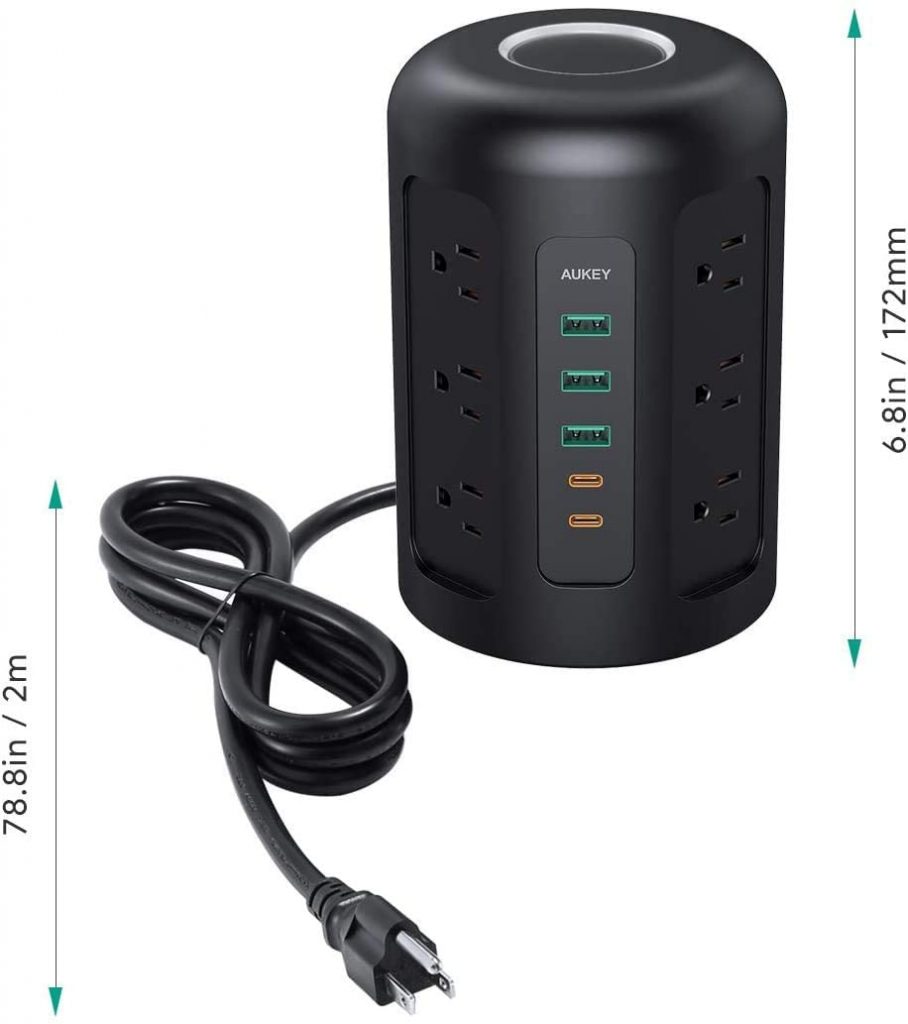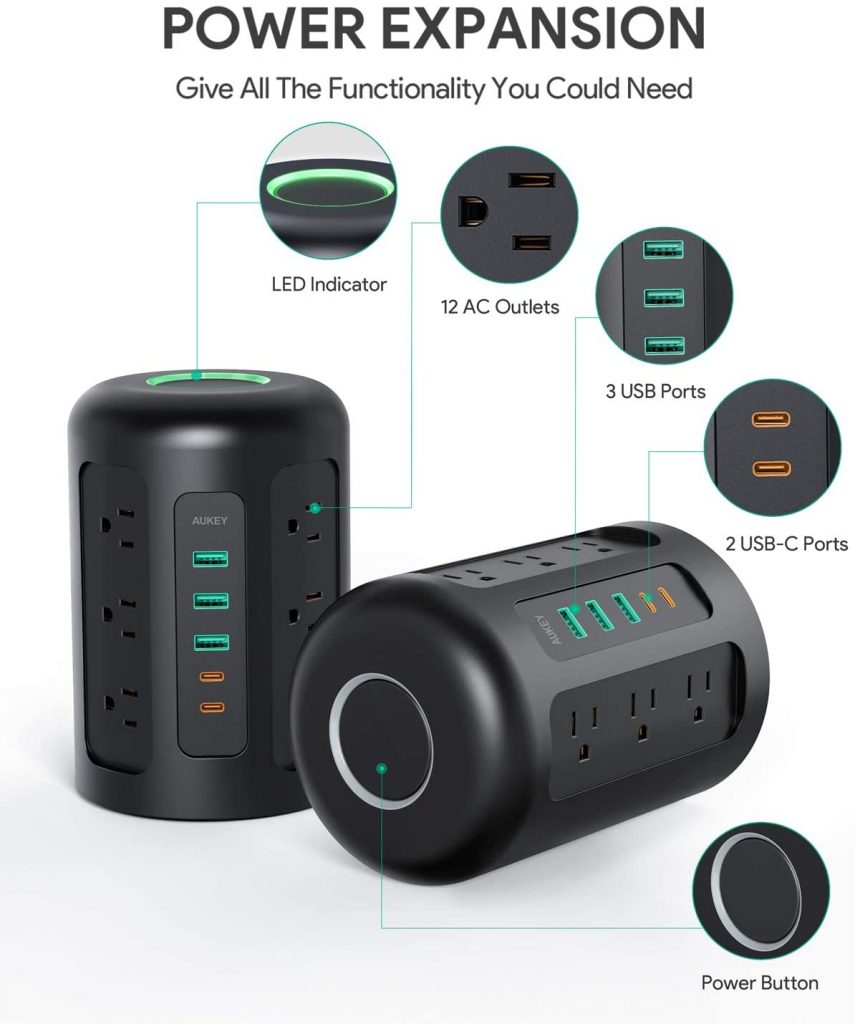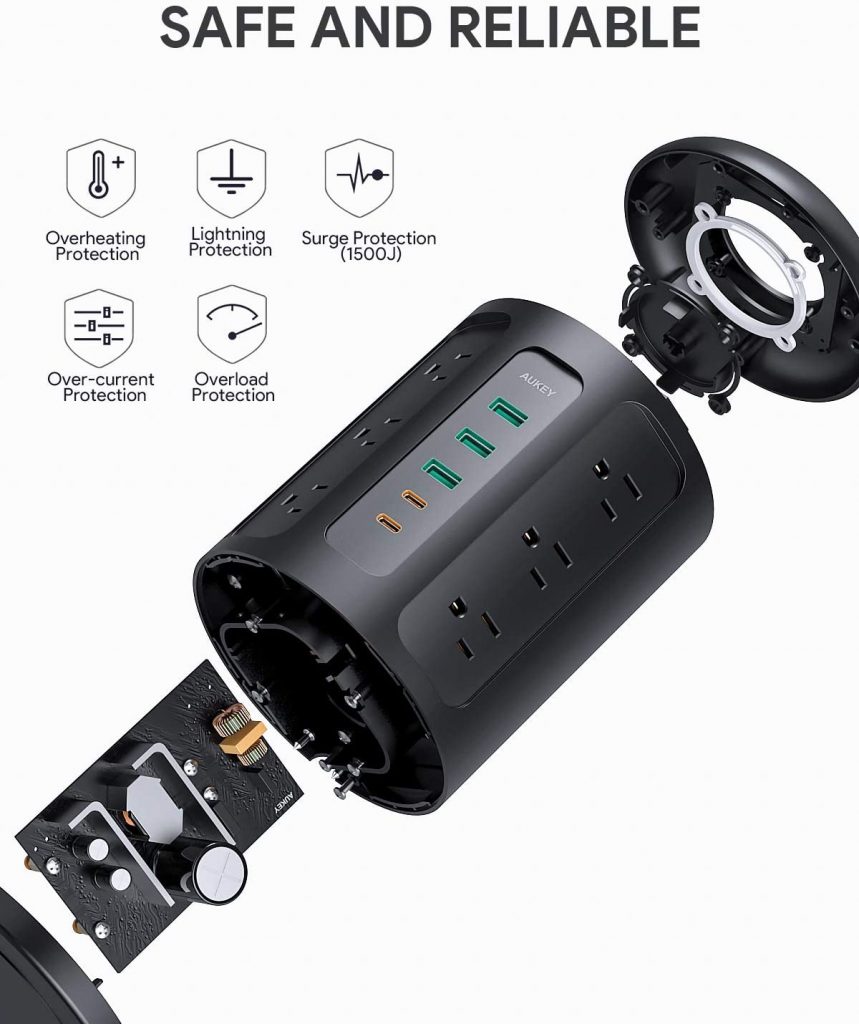Home entertainment isn’t as simple as it used to be. Back in the day, the average person might connect a TV, set-top box, game system, and/or VHS/DVD combo and that would be their whole system. Now, with the rise of flatscreens, many people are buying soundbars to supplement their system, multiple game consoles, legacy system and so much more. Naturally, this makes power management systems very important. Some have basically enhanced the wall plugs, others a strip, a few make a device that looks like another accessory and in the case of Aukey’s PowerHub XL (PA-S24), it’s a tower. With 12 outlets, an impressive five USB port, and a space-saving design, is it a must for those building a new system, or are the old ways best?
With the PowerHub, XL Aukey stuck to their usual general product packaging. We have a bland cardboard box, a simple image of the product, and no excessive marketing or information. Inside is the PowerHub XL, housed in foam, complete with manual and other basic information.

When taking it out of the packaging, it’s a surprisingly light product. I wouldn’t say it feels easy to break, just far lighter than you might expect. It’s also a rather tiny item compared to similar products. At just under 7 inches tall, it’s extremely easy to hide it somewhere or find a place to put it outside of sight. For those who want to mount it under a table or something, there are two screw holes on the bottom for just that. I personally left it on my subwoofer and it did the job no problem.
All this being said, the biggest advantage to PowerHub XL is design. While most of the products I have used a standard wall plug, things like the Nintendo Switch and Linksys router use a brick at the end. Normally this wouldn’t be an issue, except they take up a lot more space and require some additional consideration to use. Since Aukey placed the plugs sideways, they can fit in causing minimal issues. Unfortunately, fitting something next to these items can still be difficult, it’s better than many of the options out there.

An additional benefit to this arrangement is being able to better understand positioning. I can make a corner of my soundbar and subwoofer, another PlayStation 5 and Switch, use one for my TV and Apple TV, and have my router alone in the last area. These areas can then be marked and used without ever guessing or having issues getting the items just right.
In regards to performance, I was pleasantly surprised. In the room I put it in there are frequent power issues, unfortunately, due to the age of the circuit, which has not resulted in an issue from PowerHub XL. Given it has a 1500-joule energy rating, it should perform better than a cheap surge protector, but fall short of higher-end ones. But, for the most part, I would trust it to do the job under most conditions.

As previously mentioned, there are a couple of USB ports on the front. This model has three USB-A and two USB-C ports that can be used to charge your phone, tablet, Oculus, or whatever. Please note, the USB-C ports cap off at 15W each, meaning if you want fast charging or need more, they will not be suitable for that. However, general electronic use is more than enough.
Aukey PowerHub XL (PA-S24) Review – Verdict
Overall, there is little to dislike about the PowerHub XL. It does its job, includes a good number of connections, has ample space and plenty of USB ports. The ideal situation is someone who has space concerns for their plugs, like myself and Nintendo Switch, or just wants to have a single device take care of everything. Where it falls short, like energy rating and distance between ports, it more than makes up for in value. Since implementing it into my system it has allowed me to build a lot more complex a set-up, without worrying about how to make it happen.
[Editor’s Note: Aukey PowerHub XL was provided to us for review purposes.]
